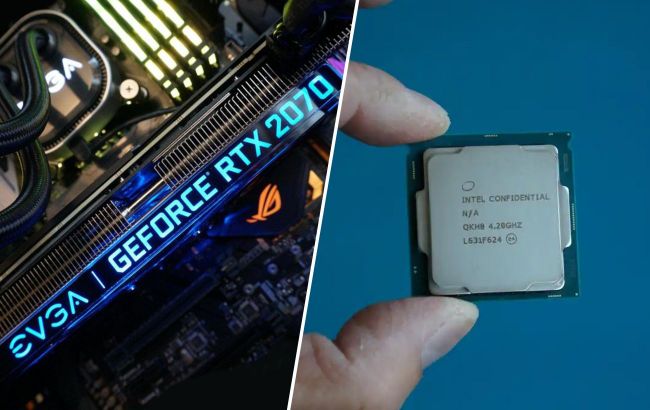Beyond tariffs: 4 new threats to phones, PCs, and gadgets in 2025
 Unexpected risks for gadgets in 2025 (collage: RBC-Ukraine)
Unexpected risks for gadgets in 2025 (collage: RBC-Ukraine)
US President Donald Trump announces major tariffs on American imports. These moves threaten not only prices but also the future of the tech market, reports PCWorld.
Will technology become a luxury again?
Personal computers were once a luxury item — rare and only accessible to enthusiasts and the wealthy. As demand and competition grew, devices became more mainstream and affordable. However, new tariffs could change this dynamic.
Rising prices reduce consumer interest in non-essential purchases. In turn, this forces manufacturers to cut back on production. Small companies, in particular, struggle, as they are unwilling to take risks in uncertain times. They may halt the release of new models or even discontinue entire product lines.
As a result, there will be fewer choices and longer waits for updates, and the market will begin to "shrink" back.

EVGA leaves the video card market due to losses (photo: Foundry)
Forget about falling prices
Previously, technology and components became cheaper because companies competed against each other and continually developed new innovations. This forced them to lower prices. However, if the market offers fewer choices, manufacturers will have no incentive to compete for customers by offering lower prices. What will we get? Stagnation or rising costs.
The case with processors is a clear example. Before AMD Ryzen, Intel had been selling the same 4-core chips for years without changing prices. And their flagship 10-core chip launched with a price tag of $1,723. Only the emergence of a worthy competitor shifted the balance of power and lowered prices.
With reduced competition and increased import costs, companies may once again dictate terms, and consumers will end up on the losing side.

Kaby Lake i7-7700X replaced by more powerful Coffee Lake i7-8700K (photo: Foundry)
Slower release of new products
In times of economic instability, companies are unlikely to want to risk investing in new devices. On the other hand, consumers lose interest in expensive upgrades when the changes compared to previous models are minimal. This creates a "paradox of expectation": some are reluctant to produce, while others are hesitant to buy.
Imagine you’re used to replacing your smartphone every two years. But if the new models differ only slightly from your current device and prices remain high, why rush to buy? This is especially true for flagship gadgets.
Companies may start to hold back on releasing innovative form factors—such as smartphones with triple-folding screens or other experimental devices. This is already happening in the graphics card segment: NVIDIA and AMD are increasingly focusing on high-end models, leaving budget-conscious users behind.
Intel remains one of the few players still catering to the lower segment, but its influence is limited.
Budget gamers continue to use older graphics cards, lowering graphics settings — and for now, it works. But how long will this last?
Meanwhile, the development of new standards, such as Wi-Fi 7 or PCIe 7.0, continues. However, the time between the announcement and the actual market release may now be significantly longer than before.

If demand for new products fades, companies will end experiments with innovative form factors like this foldable phone (photo: PCWorld)
Price unpredictability
Previously, technological progress followed a certain logic in pricing: older devices became cheaper, and new ones came at a reasonable price. However, rising production costs have already begun to disrupt this trend, and the introduction of new tariffs has made the situation even more unstable.
Companies are often forced to change their logistics, relocate production, hire new employees, and invest in training. All these expenses affect the final price of the product. Large players may temporarily absorb the impact to avoid losing market share, but they won’t be able to do this for long.
Particularly concerning is the fact that new tariffs could be introduced suddenly. For instance, the US government recently proposed a 25% tariff on all semiconductors and copper. These materials are critical for the production of almost all electronics. If these tariffs are combined with existing ones (20% on Chinese goods), the final price of devices with many components could rise sharply.
Another issue is that even manufacturers themselves are uncertain about how the new rules will be applied. Many are in emergency adaptation mode.

Detailed view of a printed circuit board with copper connections (photo: Pixabay)
You may be interested in:
-
Trump announces first country ready to lift tariffs for the US;
-
How Trump’s new tariffs will affect Ukraine's economy, according to experts;

